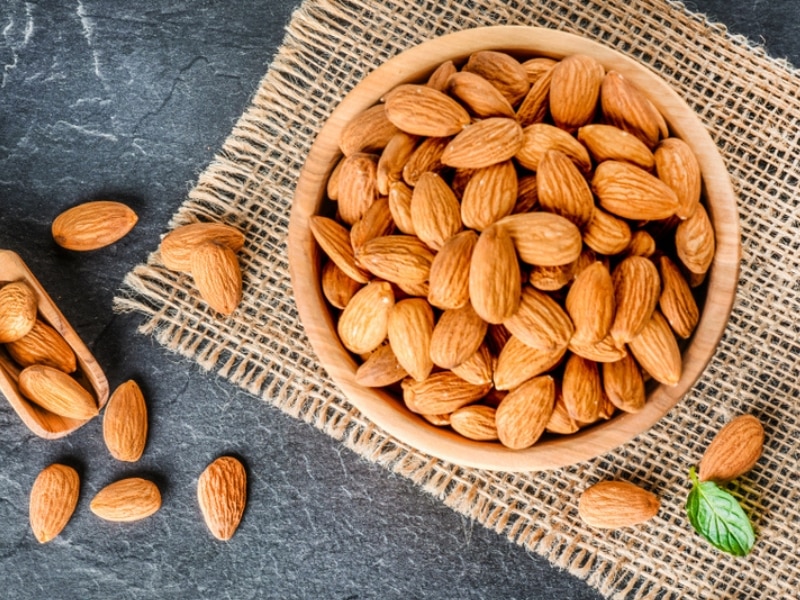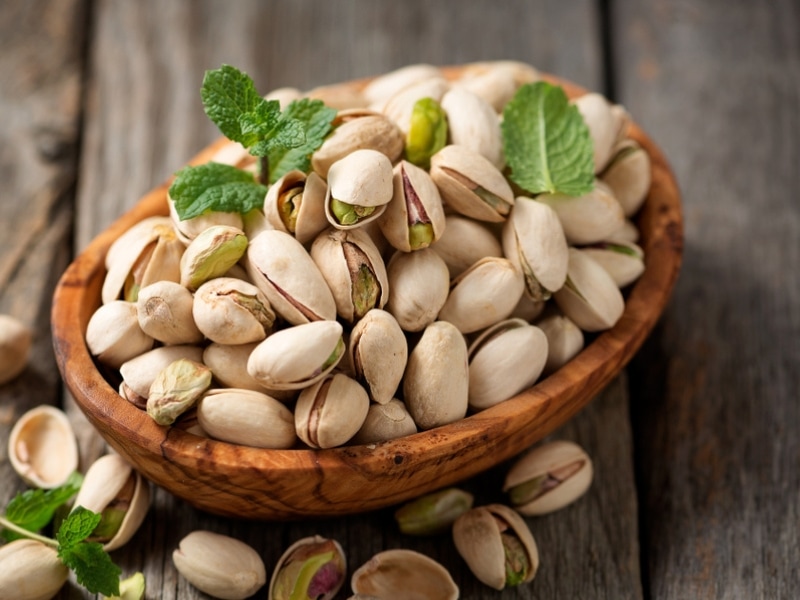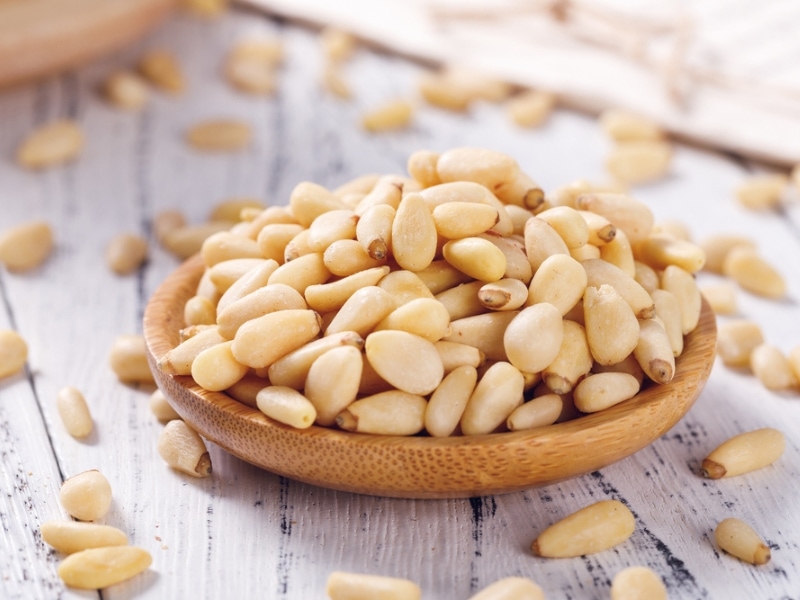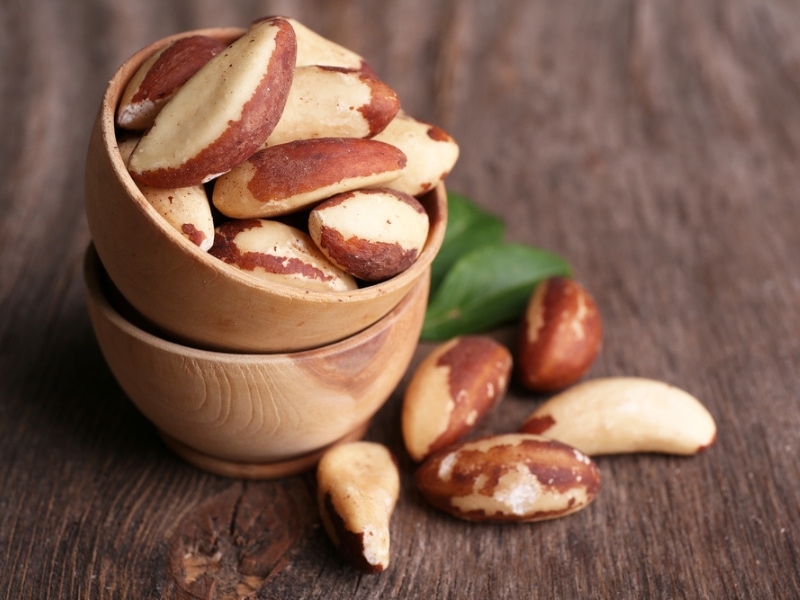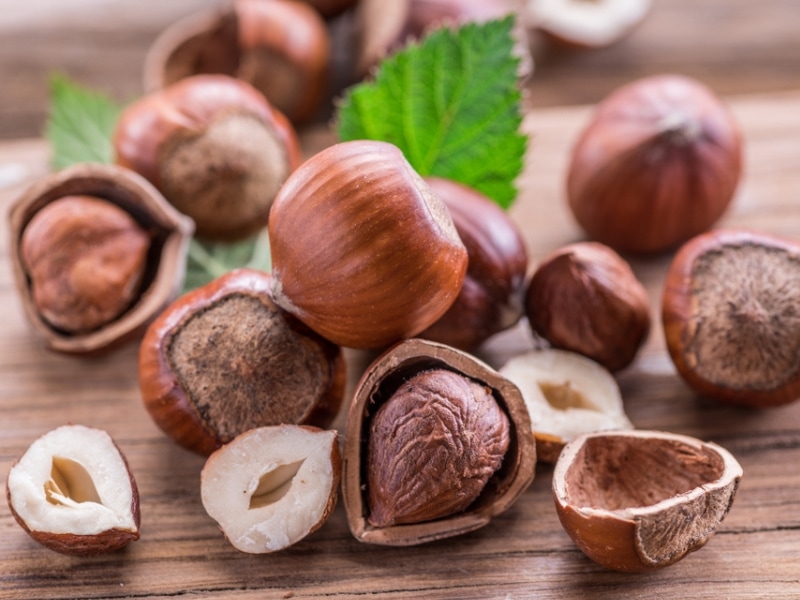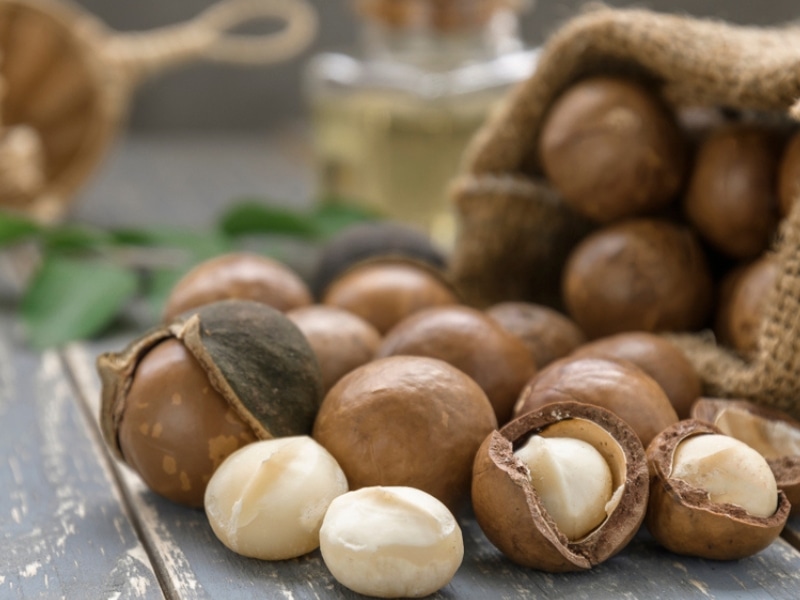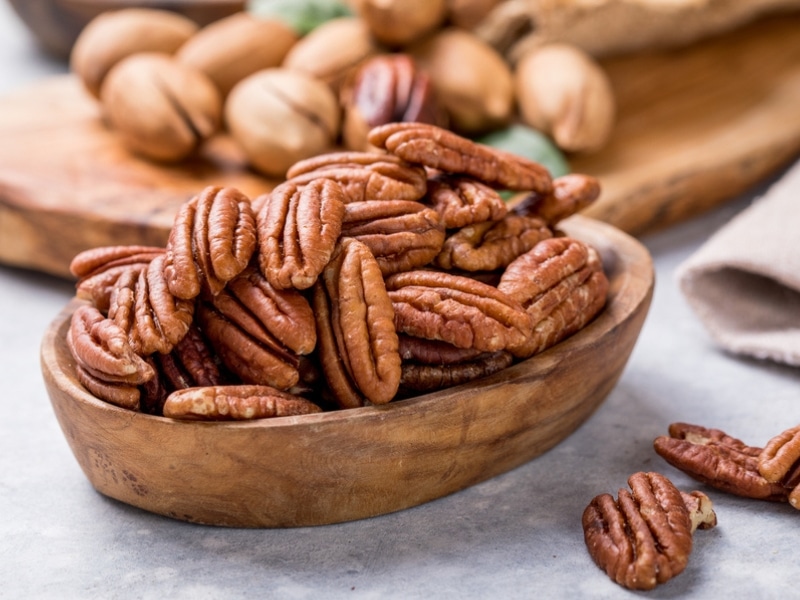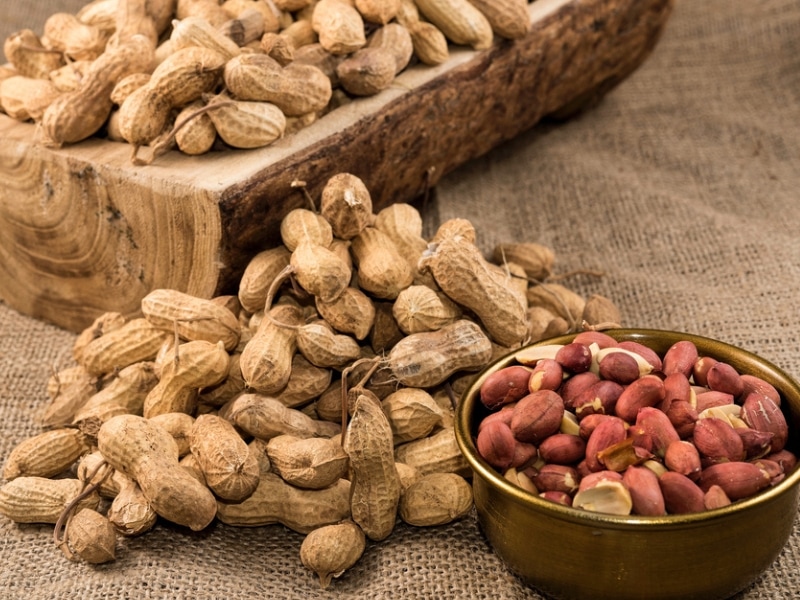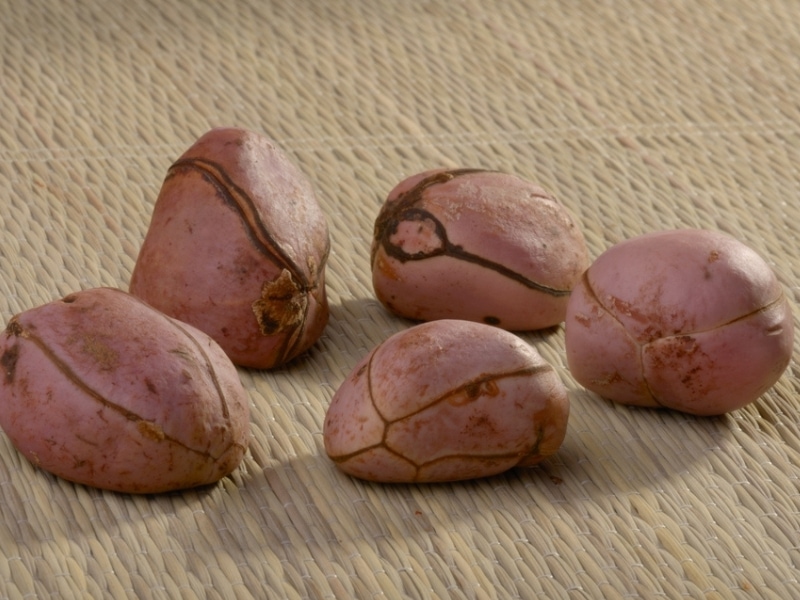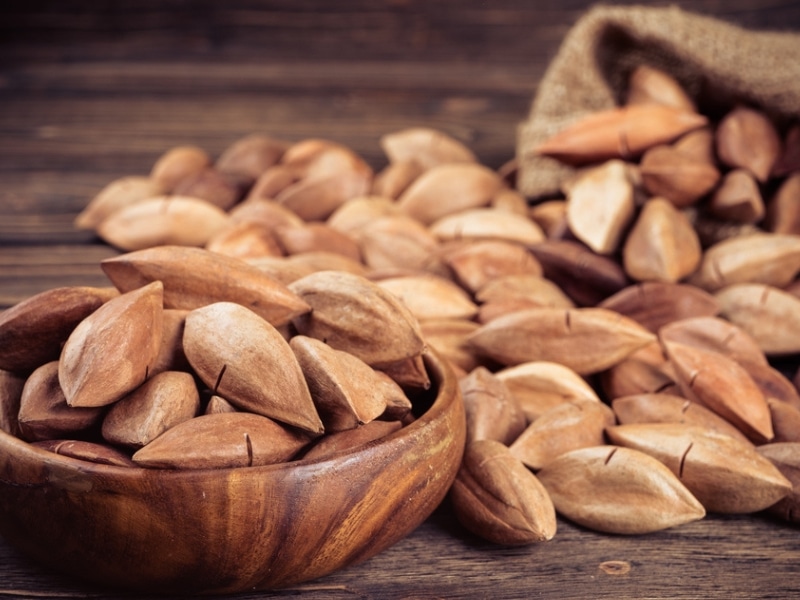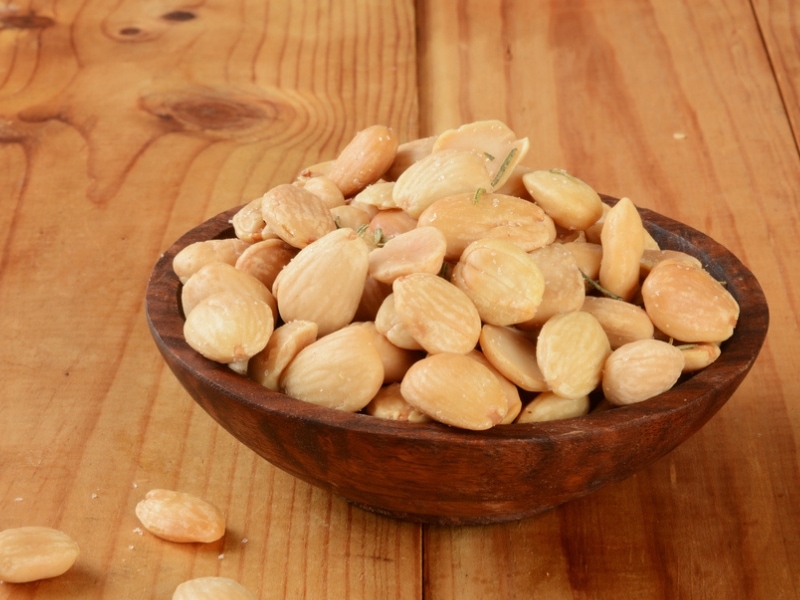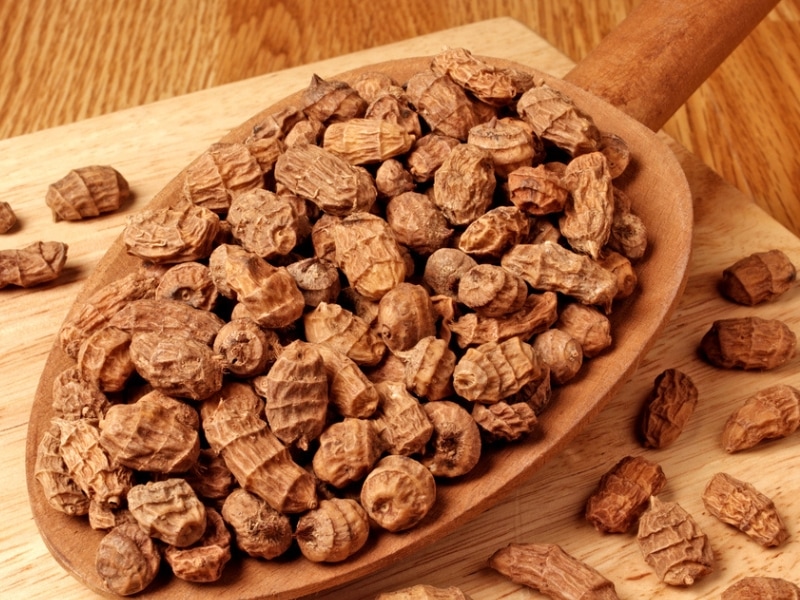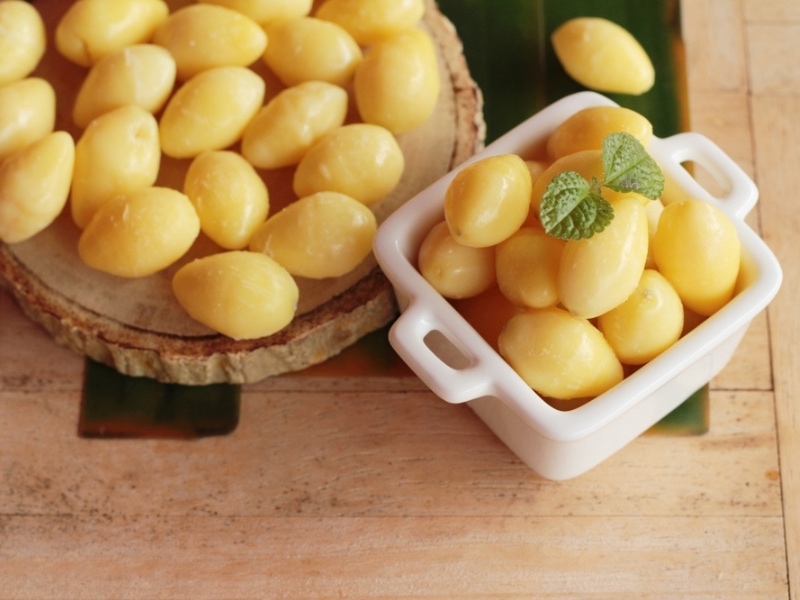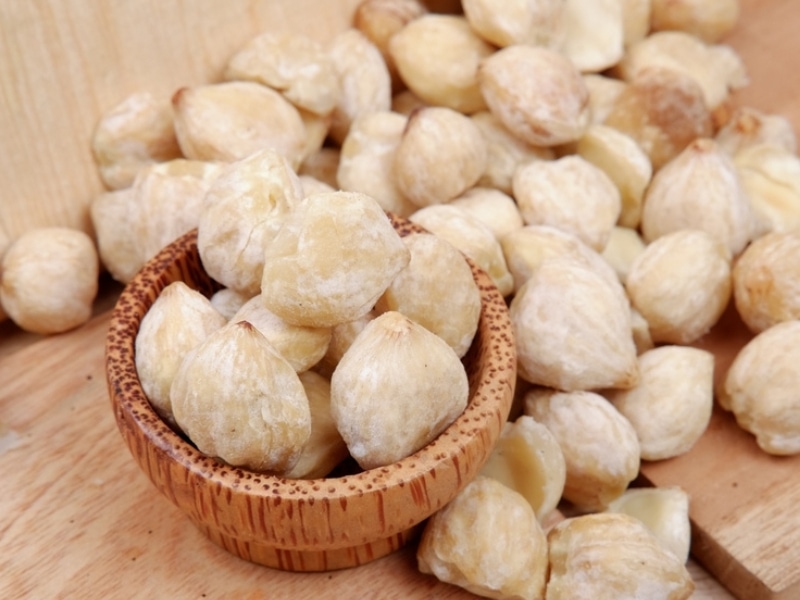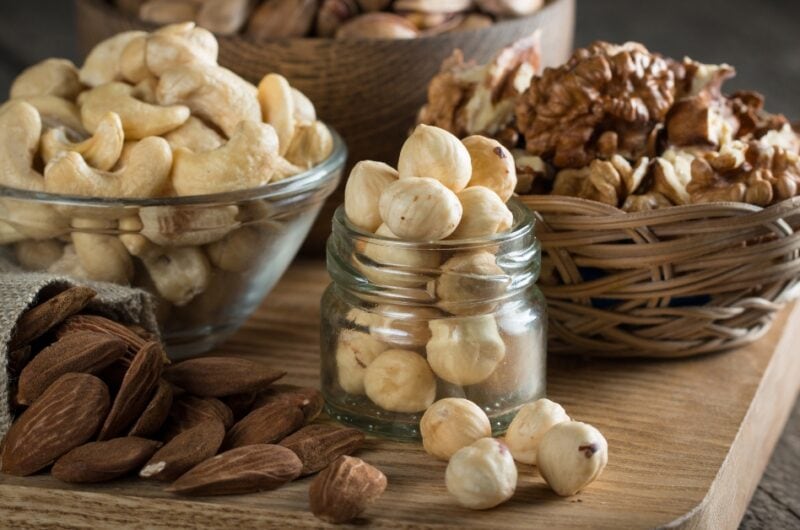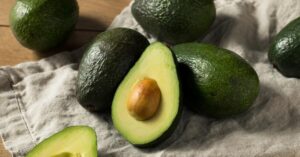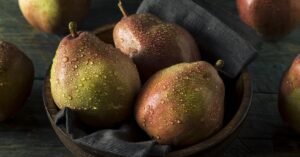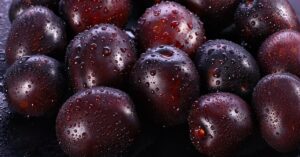They taste great on their own, but they’re also perfect for snack mixes, cookies, salads, sauces, and more. These fruits (yup, nuts are fruits!) aren’t just tasty and versatile, but healthy, too. Sure, there’s fat in them, but they’re the good kind. These addictive treats are rich in omega-3s, fiber, and vitamin E! Also, did you know that there are over 50 nut varieties in the world? Today, we’ll go through 20 of the most popular and yummy ones. Throughout this roundup, you’ll discover that some nuts are not nuts, but rather seeds or legumes! Confusing, amirite? But none of that matters. What’s important is that these types of nuts are all delicious and nutritious. Let’s go!
1. Almonds
When people think of nuts, they often think of almonds. But did you know there are actually two types of almonds? The first is the sweet almond. It’s most commonly found in stores and used for everything from snacks to baking to skincare products. The second type is the bitter almond, which contains a toxic compound and is not for consumption. Let’s focus on the first one, shall we? Beyond their delicious flavor and versatility in cooking, almonds are also known for their health benefits. They contain high levels of protein, fiber, healthy fats, and various vitamins and minerals. Whether you enjoy them as a snack or incorporated into a recipe, almonds make a nutritious addition to any diet.
2. Pistachios
These green gems are often thought of as fairly mild, but they pack a ton of nutrition and flavor. They have more protein and fiber than other types of nuts. Yep, pistachios trump almonds and peanuts in that department. Pistachios also contain healthy unsaturated fats and numerous vitamins and minerals, including vitamin B6, potassium, and magnesium. They can be enjoyed on their own as a tasty snack, or added to dishes for an extra crunchy touch. Fun fact: the shells are left on during harvest to help with easy snacking.
3. Pine Nuts
Pine nuts have become a staple in many types of cuisine. They’re found in the creamy pesto we toss with our pasta to the crunchy topping on our salads. Pine nuts have a slightly sweet and nutty flavor that pairs well with savory dishes. They might be small, but they pack a potent nutritional punch. They’re rich in healthy fats, protein, and various vitamins and minerals. And let’s not forget about the all-important taste factor. Their unique flavor can elevate even the simplest dishes to new culinary heights.
4. Brazil Nuts
Have you ever had a Brazil nut before? They might seem kind of exotic compared to your average peanut or almond. But they deserve a spot in any nut lover’s rotation. First off, they are so darn tasty – creamy and rich with just a hint of bitterness (in the best way possible). Nutritionally, they are loaded with vitamins, minerals, and healthy fats. They’re harvested by hand and then transported all over the world for us to enjoy.
5. Hazelnuts
Hazelnuts aren’t just for snacking on their own or for adding flavor to Nutella. They’re a versatile ingredient in many types of cuisine, adding richness and crunch to both sweet and savory dishes. Of course, they still make a tasty treat all by themselves. They’ve been enjoyed since ancient times! But they also go well in salads, roasted vegetables, and even baked goods like muffins or cakes.
6. Macadamia Nuts
This Australian delicacy is a personal favorite of mine. Macadamia nuts have a creamy texture and a rich, buttery flavor that sets them apart from other nuts. They were once so prized that they were reserved for the consumption of Hawaiian royalty. And to this day, they’re still some of the most expensive types of nuts on the market. While they do have a high fat content, these little gems pack in beneficial monounsaturated fats. They also contain plenty of vitamins and minerals like thiamin, manganese, and magnesium.
7. Cashews
While most types of nuts grow on trees, cashews grow on large shrubs native to South America. They were first brought to Africa by Portuguese traders and eventually spread to Asia and India. Before you can enjoy them as a snack, raw cashews must be roasted and the outer shell removed. This is because the shell contains a strong acid that can irritate your skin and eyes. So the next time you snack on some roasted cashews, take a moment to appreciate their unique history and origin! Another fun fact: while they’re some of the most popular nuts in the world, cashews are not a nut at all. Technically, they’re considered a seed that grows on the bottom of the cashew apple, which is a fruit related to mangoes and pistachios.
8. Walnuts
Walnuts are a type of drupe, rather than a nut. They have a soft outer husk, like peaches or plums, and their inner “nut” is encased in a hard shell. But when it comes to nutrition and taste, walnuts belong in the nut category. They’re rich in heart-healthy omega-3 fatty acids and also provide protein, fiber, and essential vitamins and minerals. Plus, their tasty crunch adds a delightful texture to salads, desserts, and even main entrees.
9. Pecans
Pecans have a rich, buttery flavor and can be enjoyed on their own or added to recipes for a crunchy texture. They’re packed with nutrients like healthy fats, protein, and fiber. Just a handful of pecans provide nearly 10% of your recommended daily value of fiber! There’s an easy way to incorporate more pecans into your diet. Try adding them to salads or using them as a topping for oatmeal or yogurt. You won’t regret it.
10. Chestnuts
Chestnuts have a tender, slightly sweet flavor that pairs well with savory dishes like stuffing and grilled meat. And while they can be enjoyed on their own, chestnuts also make a great ingredient in desserts like cakes and bread. Of course, roasting chestnuts on an open fire is a classic holiday tradition. Just be sure to cut an X into each one before cooking to prevent them from exploding!
11. Peanuts
Who doesn’t love a good handful of peanuts? These nuts are a staple in many households and can be found in various forms, from roasted and salted to coated in chocolate. But did you know that peanuts aren’t nuts at all? Technically classified as legumes, peanuts grow underground and have a high protein content. They’re a great addition to meals or snacks. They provide various health benefits, such as promoting heart health and helping with weight loss.
12. Kola Nuts
Have you ever heard of kola nuts? These little brown nuts come from the kola tree, which is native to tropical rainforests in Africa. Kola nuts have been used for centuries as a natural source of caffeine. They sometimes appear as an ingredient in cola-flavored sodas. But they also have a unique flavor all their own, with notes of bitter chocolate and pepper. They’re often eaten whole or powdered to be added to soups or stews. Interestingly, kola nuts aren’t the only useful parts of the tree. The bark has medicinal properties and is used in traditional African medicine.
13. Pili Nuts
You might not have heard of them before, and that’s because these nuts are native to Southeast Asia and the Pacific Islands. Pili nuts have a slightly sweet taste and a crispy texture. They’re a delicious snack on their own or as an addition to salads and baked goods. They’re also remarkably nutritious, containing high levels of magnesium, iron, and calcium. Pili nuts can be harder to find than other types of nuts, but they’re worth seeking out for their unique flavor and health benefits.
14. Marcona Almonds
Marcona almonds stand out in a crowd. These round, slightly flattened almonds are a different variety than the ones commonly found in the grocery store. They might look similar on the outside. But the Marcona almond has a creamier, sweeter taste that sets it apart from its traditional counterpart. They also have a more delicate texture, making them perfect for snacking or using as a topping on salads and desserts.
15. Tiger Nuts
They might not be as popular as almonds or walnuts, but tiger nuts are a must-try. Also called chufa or earth almonds, tiger nuts are small tubers rather than tree nuts. They have a sweet, nutty taste and can be eaten raw or roasted, added to smoothies, used in baking, or ground into flour. In terms of nutrients, tiger nuts are rich in fiber and healthy fats and also contain vitamin E and iron. So the next time you’re looking for something new to add to your snacks or meals, give tiger nuts a try!
16. Coconut
Coconut may technically be a fruit, but it’s often grouped under the nut category. With a harder outer shell and white meat inside, coconuts are drupes. They’re a type of fruit with a hard outer layer and a fleshy center. Fresh young coconuts contain refreshing, hydrating coconut water which can be drunk straight from the shell. Fully matured coconuts provide us with delicious coconut milk and meat. Both of these are used in various types of cuisines around the world.
17. Ginkgo Nuts
Also known as bai guo, ginkgo nuts have a creamy and mildly bitter taste, often used in Asian cuisine. They can be eaten raw, roasted, or cooked into dishes like congee or soup. Although there are different types of ginkgo nuts (male and female), the female variety is preferred for its larger size and better flavor. Trivia: ginkgo trees are considered living fossils! These trees have been around for over 200 million years and are known for their beautiful fan-shaped leaves.
18. Acorns
Unlike most nuts that are small and crunchy, acorns are large with a hard outer shell. They come from oak trees and are prized as a food source for animals like squirrels and birds. But they can also be used by humans! You might not realize it, but acorns can be ground into flour and used to make bread or pancakes. You learn something new every day.
19. Cedar Nuts
Also known as pine nuts or Indian nuts, these small, oval-shaped treats can be found inside the cones of certain types of cedar trees. Cedar nuts have a light, subtly sweet flavor that makes them a delicious addition to salads, pestos, granolas, and more. When it comes to nutritional value, cedar nuts also won’t disappoint. They contain healthy fats and protein, as well as essential vitamins and minerals like iron and zinc.
20. Candlenuts
Candlenuts are commonly used in Southeast Asian cuisine and have a subtle, slightly sweet flavor. In their raw form, they look similar to macadamia nuts and have a hard, shiny outer shell. Before cooking, they must be either roasted or boiled to soften them up and make them edible. Candlenuts can then be crushed and added to dishes as a thickener, much like flour or cornstarch. They’re also often cooked with coconut milk to add flavor and texture to soups and curries. Click on a star to rate it!
Average rating 5 / 5. Vote count: 1 No votes so far! Be the first to rate this post.
Share on social media: Let us improve this post!




